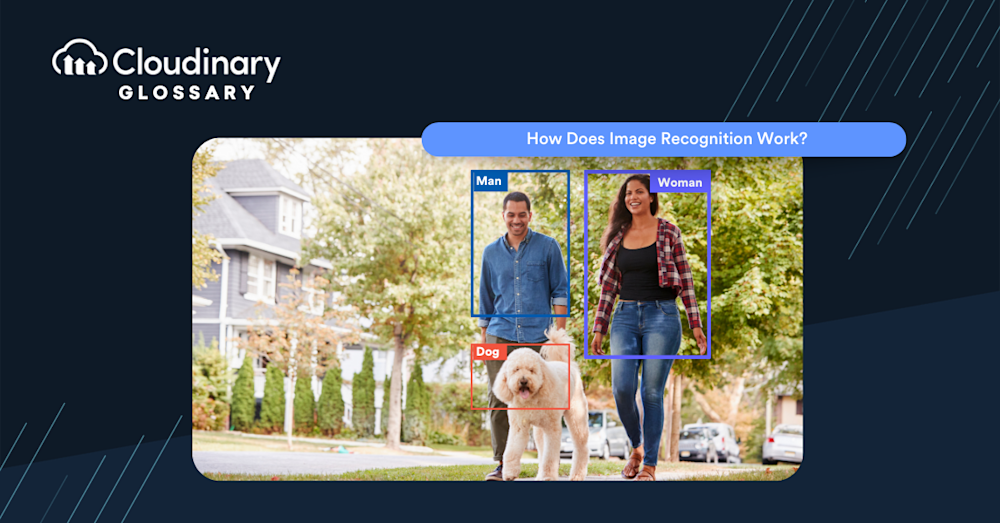What Is Image Recognition?
At its heart, image recognition is an impressive feat of technological transformation that enables machines to identify and interpret images by replicating how human vision works. It primarily leans on the power of machine learning, bolstered by data processing capability, pattern recognition chops, and deep learning models. Think of it this way: just like our brain uses neurons to identify patterns and objects in a visual scene, image recognition technology uses highly sophisticated software algorithms to perform a similar function, albeit in a digital atmosphere.
Image recognition, a core part of the broader field of computer vision, has tangible, real-world applications that touch our lives daily — from face tagging on your favorite social media platform to high-security facial recognition and even in critical areas like medical imaging diagnostics. And as we move deeper into the era of digitization and intelligent automation, the role of image recognition is set to become even more paramount.
How does Image Recognition Work?
Before delving into the world of image recognition, let’s start with some groundwork. To operate effectively, this technology depends on machine learning and neural networks. More specifically, it needs predictive models that are exposed to vast quantities of example images during the “training phase.” Like humans learning to identify new objects or people by carefully observing relevant features over time, these machine learning models also learn from patterns and data points gathered across countless examples.
Taking a closer look at the computational mechanics of image recognition, models analyze images as sets of pixels, each representing a specific color. To make sense of these images, these models look for innate patterns in the small details — every nook and cranny of each color and shape. Artificial neural networks, designed to mimic human neural systems, then work their magic: they process these patterns through multiple interconnected layers of artificial neurons. As a result, the network is trained to identify and categorize various objects within the images it processes, gradually becoming more adept at pattern-matching and applying the logic of its vast internal database.
Once our image recognition model encounters a new image, it’s time to put those learned patterns to the test. The model measures these patterns against its library of examples, generating probability scores to reflect the likelihood of accurate identification. This critical step helps mitigate any false positives or negatives, allowing the model to provide a more precise categorization. From identifying your colleagues in a group photo to detecting malignant cells in a medical scan, image recognition success hinges on this intricate symphony of predictive modeling, pattern recognition, and nuanced probability calculation.
The Many Use Cases for Image Recognition
Image recognition has been making waves across multiple industries thanks to its incredible ability to identify and interpret a wide array of visual data. The applications are as diverse as they are groundbreaking, showcasing just how versatile this technology truly is. To give you a taste of its potential, here’s a snapshot of some key use cases:
- Facial Recognition: Enhancing security systems and streamlining social media tagging.
- Automatic Image Tagging: Automating the process of tagging and sorting digital images, thereby making image database management more efficient, enhancing search capabilities, and improving user experience on various platforms.
- Medical Imaging: Detecting anomalies in diagnostic scans, such as X-rays and MRIs.
- Autonomous Vehicles: Enabling self-driving cars to navigate and interpret traffic signs.
- Retail: Streamlining inventory management and enabling customer-centric shopping experiences.
- Agriculture: Analyzing crop conditions and optimizing harvest patterns.
As technology continues to advance, the list of potential applications for image recognition keeps growing. It’s abundantly clear that this field is shaping our world in previously unimaginable ways.
What is the Difference Between Image Recognition and Object Detection?
When stepping into the fascinating realm of computer vision, one might stumble upon a couple of key terms that may appear synonymous at first: “Image Recognition” and “Object Detection.” While they share similarities in their ultimate goal—to extract meaning from images—they perform fundamentally different tasks and have distinct applications.
Image Recognition acquaints the computer with the ability to identify and distinguish between different objects in an image as a whole. Think of it as asking your computer, “What is depicted in this image?” and it responds with “a dog”, “a car,” or “a tree,” etc. On the contrary, Object Detection elevates this process by localizing these identified objects within the image. It answers a more specific question, “Where is this object placed in the image?” The computer not only recognizes what the objects are but also pinpoints their exact location by drawing a bounding box around them.
While Image Recognition could identify that there’s a bicycle in the image, Object Detection would be able to tell you where exactly the bike is. Understanding these differences would enable you to use these technologies more efficiently to satisfy your specific needs.
Harnessing the Power of Image Recognition and Object Detection
There’s no doubt that image recognition and object detection are game-changers, revolutionizing an array of sectors by comprehending and processing complex visual data with remarkable accuracy. These are no longer abstract concepts found only in advanced computer science textbooks; they now play an integral role in our daily digital interactions, driving automation and personalization like never before. As we continue to push the boundaries of what’s possible in artificial intelligence, their capabilities and applications only promise to grow exponentially.
And there’s no better way to put these cutting-edge technologies to work than with Cloudinary! As an industry-leading provider in media management, Cloudinary integrates state-of-the-art image recognition and object detection seamlessly into its robust Digital Asset Management system. Not only can you effectively store and manage your diverse media assets with Cloudinary, but you can also leverage automated tagging, enhanced search accuracy, and precise content categorization — all powered by image and object recognition.
It’s time to elevate your DAM to the next level. Discover how Cloudinary can revolutionize your media management today!
Additional Resources You May Find Useful:




